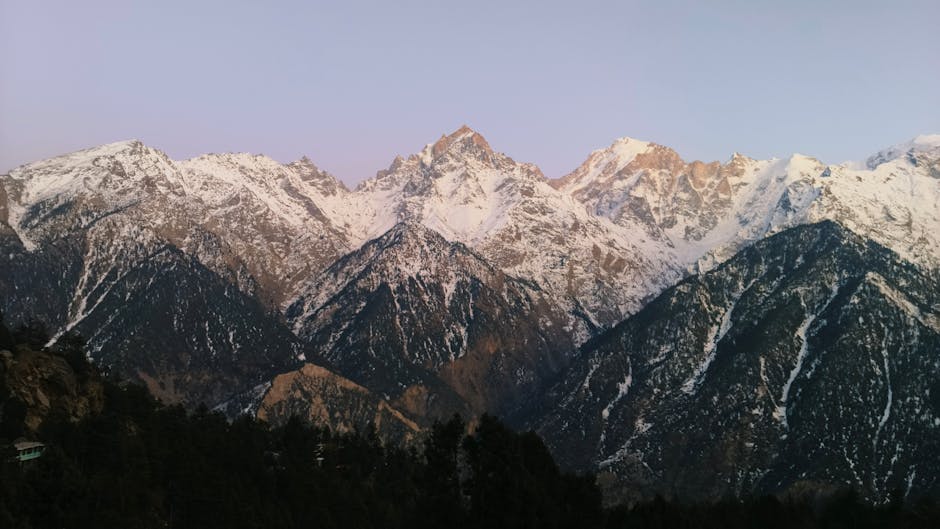A Perilous Fall at a Hydel Project
In the breathtaking but unforgiving landscapes of Himachal Pradesh‘s Kinnaur district, a dramatic rescue unfolded this week, highlighting the delicate balance between human infrastructure and the wild inhabitants of the Himalayas. A magnificent snow leopard, the elusive “Ghost of the Mountains,” found itself in a perilous, man-made trap, sparking a heart-stopping operation that has since won praise across the nation.
The incident occurred near Jangi village, at the site of the Jangi-Thopan-Powari hydel power project. Locals were the first to raise the alarm after hearing distressed cries emanating from the dam’s infrastructure. Upon investigation, they discovered an incredible sight: a fully grown snow leopard was trapped inside a deep, concrete filter inlet tank, unable to escape its smooth, vertical walls. The very structure designed to filter water for the dam had become a near-fatal prison for one of the region’s most iconic and vulnerable predators.
A Race Against Time: The Rescue Operation Begins
Word of the trapped leopard spread like wildfire, and soon, a joint team comprising officials from the state’s Forest Department, the Wildlife wing, and local police rushed to the scene. The situation was critical. The leopard was visibly stressed and exhausted from its futile attempts to claw its way out. The rescue operation in Kinnaur was a race against time, requiring a perfect blend of courage, caution, and expertise.
Executing a rescue of a large, panicked predator from a confined space is no small feat. The primary concern for the team was the safety of both the animal and the personnel involved. After assessing the situation, the team devised a meticulous plan to save the snow leopard.
The Ghost of the Mountains is Saved
Using specialized equipment, the team carefully lowered a large, sturdy trap cage into the deep inlet. The challenge was to coax the frightened animal into the cage without causing further panic. With immense patience and skillful maneuvering, the team successfully guided the snow leopard into the safety of the cage. The moment the cage door secured, a collective sigh of relief was palpable among the rescuers and the gathered villagers who watched with bated breath.
The cage was then carefully hoisted out of the tank. A veterinary team was on standby to conduct an immediate health assessment. Miraculously, despite the fall and the stressful confinement, the majestic cat was found to be largely unharmed, suffering only minor abrasions and exhaustion.
Back to the Wild: A Second Chance
After a brief period of observation to ensure it had fully recovered from the trauma, the Forest Department made the decision to release it back into its natural habitat. Under the watchful eyes of the officials who had saved its life, the snow leopard was set free in a nearby protected forest area. It quickly vanished back into the rocky terrain it calls home, a successful rescue mission complete.
This incident has once again brought to the fore the growing issue of human-wildlife interaction in the fragile Himalayan ecosystem. As development projects push deeper into pristine habitats, such encounters are becoming more frequent. However, the successful and swift rescue operation in Kinnaur also serves as a powerful and heartening example of effective coexistence and conservation in action.




